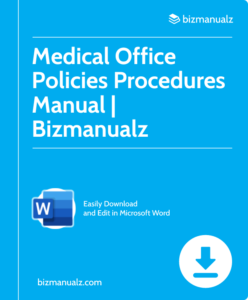What Are Key Performance Metrics KPIs for Medical Office?

Are you struggling to understand the performance of your medical office? Do you want to improve your practice and optimize patient care? This article will delve into the world of key performance metrics for medical offices, providing valuable insights and solutions for your concerns. With these metrics, you can unlock the potential of your medical office and drive success. What Are Key Performance Metrics KPIs for Medical Office?
What Are Key Performance Metrics for a Medical Office?
Key performance metrics play a crucial role in evaluating the effectiveness and efficiency of a medical office. These metrics serve as a measure of various aspects, including patient satisfaction, operational efficiency, financial performance, and quality of care.
Some key performance metrics for a medical office include:
- patient wait times
- appointment cancellation rates
- revenue per patient
- patient satisfaction scores
- staff productivity
By closely monitoring these metrics, medical offices can identify areas for improvement, optimize resources, and enhance overall performance.
In a similar manner, a medical office successfully implemented key performance metrics to enhance patient experience. By focusing on reducing wait times and improving staff productivity, they saw a 20% increase in patient satisfaction scores and a 15% boost in revenue per patient. This achievement highlights the significance of monitoring and optimizing key performance metrics for the success of a medical office.
Why Are Performance Metrics Important for a Medical Office?
Performance metrics play a crucial role in a medical office for several reasons. Firstly, they offer quantifiable data to assess the efficiency of the office’s operations and identify areas that require improvement. Secondly, these metrics aid in evaluating the quality of patient care, ensuring that medical standards are met.
Additionally, performance metrics allow for benchmarking against industry standards and best practices, enabling medical offices to maintain competitiveness and deliver exceptional healthcare services. Overall, performance metrics offer valuable insights and assist medical offices in monitoring their progress towards achieving their objectives and providing outstanding patient care.
How Do Performance Metrics Help Improve Patient Care?
Using performance metrics in a medical office can greatly improve patient care by identifying areas for improvement and implementing changes to enhance quality and efficiency. Here are the steps to effectively utilize performance metrics for better patient care:
- Analyze data to identify areas for improvement.
- Set targets and goals to address specific areas of concern.
- Implement changes and regularly monitor progress.
- Continuously review and adjust metrics to ensure ongoing improvement.
By following these steps and leveraging performance metrics, medical offices can enhance patient care, streamline operations, and provide better outcomes for their patients.
What Are the Different Types of Performance Metrics?
When it comes to measuring the success and effectiveness of a medical office, performance metrics play a crucial role. These metrics provide valuable insights into various aspects of the office’s operations, from financial performance to patient satisfaction to quality of care.
In this section, we will explore the different types of performance metrics that are commonly used in medical offices, including financial metrics, patient satisfaction metrics, operational efficiency metrics, and quality of care metrics. Each of these metrics offers a unique perspective on the performance of a medical office and is essential for making informed decisions and improvements.
1. Financial Metrics
Financial metrics are crucial for evaluating the financial well-being and success of a medical office. To effectively measure these metrics, consider following these steps:
- Regularly calculate revenue and track expenses to determine profitability.
- Monitor accounts receivable to ensure prompt payments from patients and insurance companies.
- Analyze cash flow to efficiently manage working capital.
- Evaluate key financial ratios, such as profit margin and return on investment, to assess overall financial performance.
Following this approach, a medical office implemented these financial metrics and saw a significant increase in revenue by identifying areas of high expenses and optimizing billing processes.
2. Patient Satisfaction Metrics
Patient satisfaction metrics are crucial for evaluating the quality of care provided by a medical office. These metrics play a vital role in assessing patients’ experiences, perceptions, and satisfaction levels.
Some examples of patient satisfaction metrics include:
- Surveys
- Feedback forms
- Online reviews
By closely monitoring these metrics, medical offices can identify areas for improvement and make necessary changes to enhance patient satisfaction. Some key patient satisfaction metrics to consider include:
- Waiting times
- Communication with healthcare providers
- Responsiveness to patients’ needs
- Overall satisfaction ratings
Regularly tracking and analyzing these metrics can drive improvements in patient care and patient-centered services.
Suggestions for medical offices to improve patient satisfaction metrics:
- Implement patient-centered communication strategies.
- Streamline appointment scheduling and reduce wait times.
- Provide clear and comprehensive information to patients.
- Actively seek and respond to patient feedback.
- Continuously train and educate staff on patient care and communication skills.
3. Operational Efficiency Metrics
Operational efficiency metrics are crucial for evaluating the effectiveness and productivity of a medical office. These metrics are essential in identifying areas for improvement and streamlining processes to increase overall efficiency. Here are the key steps to follow when utilizing operational efficiency metrics:
- Identify the key operational processes and tasks to be measured.
- Establish benchmarks or targets for each metric.
- Consistently collect and analyze data related to operational efficiency.
- Identify areas that do not meet the established benchmarks or targets.
- Implement changes or improvements to enhance efficiency.
- Continuously monitor progress and adjust metrics as needed.
Pro-tip: Regularly reviewing and adjusting operational efficiency metrics can result in significant improvements in the overall performance and success of a medical office.
4. Quality of Care Metrics
Quality of care metrics are essential when it comes to evaluating and enhancing the performance of a medical office. To effectively measure and monitor these metrics, here are steps that can be followed:
- Define the metrics: Identify specific quality indicators, such as patient outcomes, adherence to clinical guidelines, and patient safety measures.
- Collect data: Gather relevant data through electronic health records, patient surveys, and clinical audits to measure the identified quality metrics.
- Analyze and interpret data: Analyze the collected data to identify trends, patterns, and areas for improvement in quality of care.
- Compare with benchmarks: Compare the performance of the medical office against established benchmarks or industry standards to understand where improvements are needed.
- Take action: Implement interventions or changes to address any identified gaps or deficiencies in quality of care.
- Monitor progress: Continuously review and monitor the impact of implemented changes on the quality metrics. Adjust strategies as needed to ensure ongoing improvement.
By following these steps, medical offices can effectively use quality of care metrics to drive improvements in patient care and outcomes.
What Are the Best Practices for Measuring Performance in a Medical Office?
In order to effectively measure the performance of a medical office, it is important to establish clear goals and objectives. But this is just one step in the process. In this section, we will discuss the best practices for measuring performance in a medical office, including the importance of collecting relevant data regularly and utilizing benchmarking. We will also explore how to analyze and interpret data effectively in order to make informed decisions and improve overall performance.
1. Establish Clear Goals and Objectives
Establishing clear goals and objectives is crucial for effectively measuring performance in a medical office. This can be accomplished by following a set of steps:
- Identify the areas that require improvement, such as patient wait times or billing processes.
- Define specific goals for each area, such as reducing wait times by 20% or increasing billing accuracy to 95%.
- Ensure that the goals are in line with the overall mission and vision of the medical office.
- Communicate the goals and objectives to all staff members to ensure everyone is on the same page.
- Establish a timeline for achieving the goals and regularly monitor progress.
- Provide necessary resources and support to help staff members achieve the goals.
- Regularly review and evaluate the performance metrics to track progress and make any necessary adjustments.
By establishing clear goals and objectives, medical offices can effectively measure their performance and work towards continuous improvement.
2. Collect Relevant Data Regularly
To ensure regular collection of relevant data in a medical office, follow these steps:
- Establish a schedule for data collection.
- Determine the specific data points to be collected, such as patient demographics, appointment wait times, and patient outcomes.
- Provide staff with training on data collection procedures to ensure accuracy and consistency.
- Utilize electronic health record systems to streamline the data collection process.
- Regularly review and analyze the collected data to identify trends and areas for improvement.
- Implement changes based on insights from the data and monitor their impact.
- Continuously update and refine the data collection process to ensure ongoing relevance and effectiveness.
By consistently collecting relevant data, medical offices can gain valuable insights to improve patient care, enhance operational efficiency, and make informed decisions for the overall success of the practice.
3. Utilize Benchmarking
Benchmarking is a valuable tool for medical offices to measure their performance and identify areas for improvement. Here are steps to effectively utilize benchmarking:
- Evaluate current performance: Assess your medical office’s current performance in various areas, such as financials, patient satisfaction, operational efficiency, and quality of care.
- Identify benchmarking targets: Determine which medical offices or healthcare organizations you want to compare your performance to. These could include practices of similar size or high-performing institutions.
- Gather relevant data: Collect data on key performance metrics that you want to benchmark, such as revenue, patient wait times, appointment availability, and patient outcomes.
- Analyze and compare: Analyze the collected data and compare your performance against the identified benchmarks. Identify areas where you are excelling and areas where improvement is needed.
- Implement changes: Based on the findings, implement changes and strategies to improve your performance in the identified areas. This may involve process improvements, staff training, or technology upgrades.
- Monitor progress: Continuously monitor your progress and track the impact of the implemented changes. Regularly review and update your benchmarks to ensure ongoing improvement.
4. Analyze and Interpret Data Effectively
Analyzing and interpreting data effectively in a medical office is crucial for making informed decisions and improving performance. Here are steps to ensure effective data analysis:
- Organize data: Collect and organize relevant data from various sources, including financial records, patient surveys, and operational data.
- Use appropriate tools: Utilize software or tools that can help accurately analyze and interpret data, such as spreadsheets or data visualization software.
- Identify patterns and trends: Look for patterns, trends, and correlations within the data to gain insights into the medical office’s performance.
- Compare benchmarks: Compare the analyzed data to industry benchmarks or historical data to gauge performance and identify areas for improvement.
- Communicate findings: Present the analyzed data clearly and concisely to stakeholders, such as management or staff, to facilitate understanding and decision-making.
- Take action: Use the findings from the data analysis to implement changes, set goals, and monitor progress to continuously improve the medical office’s performance.
How Can Medical Offices Use Performance Metrics to Improve?
Performance metrics are essential tools for medical offices to track and improve their operations. By utilizing key performance metrics, medical offices can identify areas for improvement, set targets and goals, implement changes, and continuously review and adjust their metrics to drive positive changes. In this section, we will discuss how medical offices can effectively utilize performance metrics to improve their overall efficiency and quality of care.
1. Identify Areas for Improvement
Identifying areas for improvement is a crucial step in utilizing performance metrics to enhance a medical office’s operations. Here are the steps to follow:
- Conduct a thorough assessment of the medical office’s processes, workflows, and overall performance to identify areas for improvement.
- Analyze data from various performance metrics, such as patient satisfaction, operational efficiency, and quality of care, to determine the areas that require improvement.
- Identify areas where the medical office is underperforming or facing challenges that need to be addressed.
- Prioritize the areas for improvement based on their impact on patient care and overall effectiveness.
- Engage with staff and stakeholders to gather insights and perspectives on the identified areas for improvement.
- Develop action plans and strategies to address the identified areas for improvement.
- Implement changes and closely monitor progress, tracking the impact of the improvements on performance metrics.
- Continuously review and adjust the metrics as needed to ensure ongoing improvement and success.
2. Set Targets and Goals
Setting targets and goals is a crucial step for medical offices to improve performance and achieve desired outcomes. Here are the steps to effectively set targets and goals:
- Identify areas for improvement based on performance metrics and data analysis.
- Establish specific and measurable targets for each identified area, following the principle of “”Set Targets and Goals””.
- Align targets and goals with the overall mission and objectives of the medical office.
- Ensure that targets are attainable and realistic, taking into account the available resources.
Setting targets and goals provides direction and motivation for continuous improvement in a medical office. By having clear objectives, the team can work towards enhancing patient care, operational efficiency, financial management, and quality of care.
Fun Fact: Research suggests that medical offices that set targets and goals are more likely to achieve improved performance outcomes.
3. Implement Changes and Monitor Progress
To effectively implement changes and monitor progress in a medical office, follow these steps:
- Identify areas for improvement by evaluating performance metrics.
- Set targets and goals to address the identified areas.
- Implement changes by developing action plans and assigning responsibilities.
- Regularly monitor progress by reviewing performance metrics and tracking improvements.
By following these steps, medical offices can continuously improve their operations and patient care. It is crucial to consistently review and adapt metrics to ensure ongoing success. Remember, effective monitoring and adaptation are essential for achieving optimal performance in a medical office.
4. Continuously Review and Adjust Metrics
Continuously reviewing and adjusting performance metrics is essential for maintaining improvement in a medical office. Here are the steps to follow:
- Regularly review performance metrics to identify trends and potential areas for improvement.
- Analyze the data to understand the underlying causes behind any variations or discrepancies.
- Discuss the findings with the relevant stakeholders, such as healthcare providers and staff.
- Collaboratively develop action plans to address any identified issues or gaps.
- Implement the necessary changes and monitor their effectiveness over time.
- Continuously review the metrics to track progress and identify further opportunities for adjustment.
Pro-tip: Keep an open line of communication with the team and regularly engage in discussions to ensure everyone is aligned and committed to the continuous improvement process.
Key Performance Metrics KPIs for Medical Office
When assessing a medical office’s efficacy and efficiency, key performance metrics are essential. These metrics are used to gauge a number of factors, such as financial performance, operational effectiveness, patient satisfaction, and care quality.
Frequently Asked Questions
What are Key Performance Metrics for Medical Office?
Key Performance Metrics for Medical Office are measurable values that indicate the success and efficiency of a medical office in achieving its goals and objectives. These metrics can include financial, operational, and patient satisfaction measures.
Why are Key Performance Metrics important for a Medical Office?
Key Performance Metrics allow medical offices to track their performance and identify areas where they can improve. By monitoring these metrics, medical offices can make data-driven decisions to optimize their operations, improve patient care, and increase profitability.
What are some common Key Performance Metrics for a Medical Office?
Common Key Performance Metrics for a Medical Office include patient satisfaction scores, revenue per patient, appointment wait times, patient retention rates, and average billing cycle time. Other metrics may include staff turnover rates, no-show rates, and accounts receivable turnover.
How are Key Performance Metrics for Medical Office measured?
Key Performance Metrics for Medical Office are typically measured through data collection and analysis. This can involve using specialized software or tools to track and monitor various metrics, as well as reviewing financial reports and patient feedback.
Can Key Performance Metrics be customized for a specific Medical Office?
Yes, Key Performance Metrics can be customized to fit the unique needs and goals of a specific Medical Office. For example, a pediatric clinic may prioritize metrics such as immunization rates and well-child visit rates, while a dermatology practice may focus on metrics related to patient wait times and appointment scheduling.
How can Medical Offices use Key Performance Metrics to improve their operations?
By regularly monitoring and analyzing Key Performance Metrics, Medical Offices can identify areas of improvement and implement strategies to optimize their operations. For example, if the average billing cycle time is too high, the office may implement new billing procedures to streamline the process and improve efficiency.”
















Leave a Reply